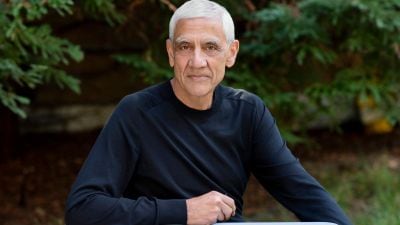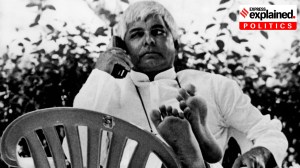Just what the Buddha ordered
For the first time in ten years, since the regime took back power from Aung San Suu Kyi, General Maung's presence indicates that India is ...

For the first time in ten years, since the regime took back power from Aung San Suu Kyi, General Maung’s presence indicates that India is ready to come to terms with its eastern neighbour
The story of India’s relationship with Burma, or Myanmar as it has been called for the last decade, is perhaps the most poignant of our times. As the leaders of the Myanmarese military regime prayed at the Mahabodhi temple in Bodh Gaya this week, twice in the same day, it evoked a rush of memory and longing about the connections that once were, and that, in recent times, have been overshadowed with various strains of pride, prejudice and politics.
But General Maung Aye, the vice-chairperson of the State Peace and Development Council (SPDC) and part of the all-powerful military trinity (along with Chairperson Than Shwe and Khin Yunt, in charge of intelligence and foreign affairs) is finally in India this week, along with a delegation from the ministries of foreign affairs, industry, finance, science andtechnology, power and commerce.
For the first time in ten years, since the regime took back power from Aung San Suu Kyi — evoking in India, as in the other countries, strong, contradictory emotions — General Maung’s presence here indicates that India is ready to come to terms with its eastern neighbour. “We are committed to non-interference in other people’s affairs,” one official said. “The solutions have to come from within.”
Finally, then, New Delhi has realised that it need not pass sanctimonious, preachy judgements about the virtues of democracy, nor abandon Suu Kyi. For the moment, as Myanmar slowly awakens from its self-imposed diplomatic slumber, it is enough that India simply adopt the Middle Path. Just like the Buddha, so many centuries ago, ordered.
The Myanmarese journey to India, in so many ways, seems a bit like a mobile feast: from food for the soul in Bodh Gaya to food for the mind in Bangalore (visiting ISRO, the Indo-American hybrid seed plant, Infosys and Hindustan Aeronatics). In Delhi, the political establishment — President K.R. Narayanan downwards, notwithstanding his wife’s predelictions — will turn out to greet him. There’s the inevitable Agra tour too and unusually, Udaipur.
The importance of doing business with Myanmar, analysts say, cannot be underlined enough. India’s bete noire, General Pervez Musharraf of Pakistan is going to Yangon next month, and though New Delhi hates to admit it, the military-to-military handshake across the span of the Indian landmass is making it a little skittish. By inviting General Maung to visit before he meets Musharraf, New Delhi feels it can preempt the painting of a picture in which India is made out to be the sub-continental rogue.
Other abiding considerations include, jointly tackling insurgency and drugs trafficking in the north-east (the states of Arunachal, Nagaland, manipur and Mizoram border Myanmar). In the time of Khaleda Zia’s government in Bangladesh, sources say, militants from the ULFA, PLA and NSCN outfits often used bases in the Chittagong hill tracts in Bangladesh (aided by Pakistan’s ISI) from where they carried out strikes against Indian armed forces. By the mid-nineties, India was already using the help of the Myanmarese army to conduct operations in the region. As the army chief in charge of operations, General Maung becomes a key figure to deal with.
One reason for India’s on-off policy towards Myanmar in the last decade has been its close engagement with China. As the world moved to impose sanctions after Suu Kyi was summarily ousted by the military government in 1989, Beijing moved in to extend political support (it did the same in the early 1960s after Ne Win shut off his country from the rest of the world). Within a few years, it was building installations in Myanmar’s Coco and Haingyi islands, within shouting distance from the Andamans. On the mainland too, Beijing began to build roads, help resurrent local industry and generally exported everything from common pins to bicycles to tanks for the Myanmarese army.
Soon enough, New Delhi realised it wasn’t enough to simply sit back and worry. The idea to build the border road from Moreh in Manipur to Tamu across the border was not only to invigorate trade in goods and services, but also to offer joint socio-economic stakes for people on both sides. Officials now say they are willing to look at other projects in the North-east, such as hydel projects and even ports, that would in turn invigorate the Bay of Bengal community.
As General Maung receives the Indian guard of honour on Friday morning, India seems to be doing its bit to complete the circle that began with the Buddha and his many messengers who fanned out across South-East Asia aeons ago. The link continues into the last century, when India and Burma — both under the British — gave each other their last heroic, but weak-willed kings, to be exiled and spend the last years of their lives. After Bahadur Shah Zafar lost the throne of Delhi to the British, he was packed off to Rangoon. Burma’s King Thebaw, the last monarch who lived in Mandalay’s glass palace, undertook the western journey to Ratnagiri in present-day Maharashtra. He lived there till the end of his life.
Again this century, India’s links with Burma-Myanmar were rewritten in blood, when Indian soldiers fought on both sides during the Second World War — with the British as well as with the Japanese. Towards the end of that war, a few million people, Indians and Burmans who had lived for generations across the fertile Irrawaddy delta, simply uprooted themselves and walked across the mountains to India. That long march, a monumental story of separation and partition, is one of the most poignant stories of our times.



- 01
- 02
- 03
- 04
- 05



























